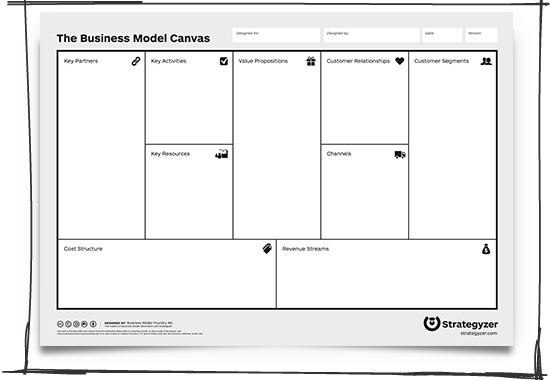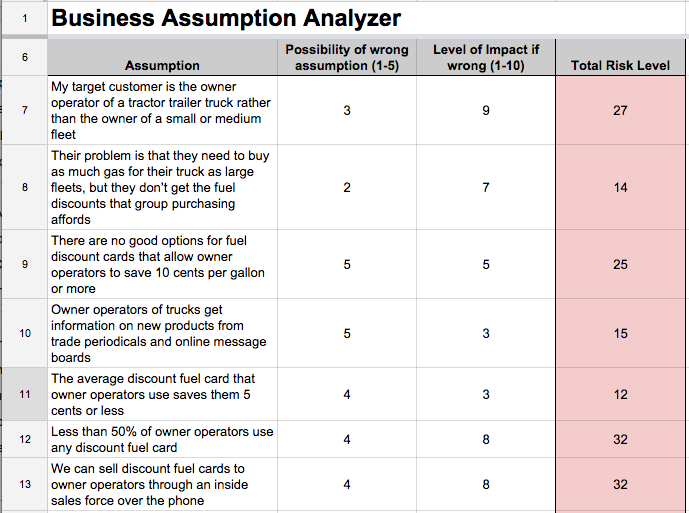
“Risk comes from not knowing what you're doing.” - Warren Buffett
There are a multitude of risks that come along with launching a tech startup. When you take your first step on the path of entrepreneurship, not only do you have to invest your own personal funds in the venture, but you must sacrifice your family, social, and work life to build your dream company. This is a lot to put on the line for something that may fail before even getting off the ground.
While there is no surefire way to found a successful risk-free startup, there are plenty of ways to help you identify and remove many of the risks that face your company. Taken from top industry experts, this blog post is full of startup tips and tricks to help give you peace of mind as you launch your venture.
What Are Your Business Assumptions?
The first step to identifying and eliminating the risks your startup faces is to lay out your business assumptions, which will serve as the foundation of your business plan. According to Inc.com, “An assumption is a statement that is presumed to be true without concrete evidence to support it. In the business world, assumptions are used in a wide variety of situations to enable companies to plan and make decisions in the face of uncertainty.”
While it may be easy to gloss over the importance of carefully listing out your assumptions, taking the time to do so will greatly affect the future of your startup. In the Ivey Business Journal article, “Strategic Assumptions: The Essential (and Missing) Element of Your Strategic Plan,” Mark Hollingworth posits that assumptions reflect the vision, strategic map, and performance targets of a business, and are vital to the success of your company.
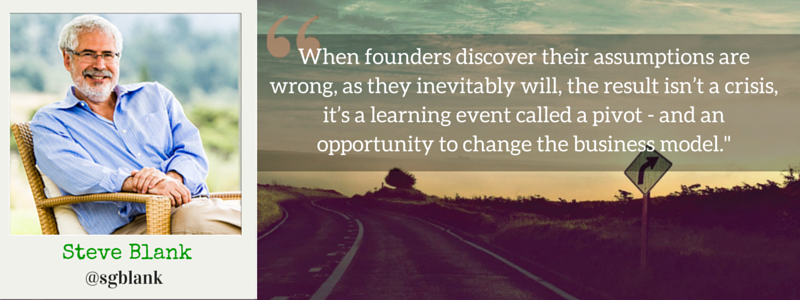
Your company’s business model should be comprised of nine basic building blocks, which are listed out below:
- Your Customer Segments. Tabulate all of the people and/or organizations for whom you are providing value.
-
Your Value Proposition for each segment. Describe your product and its features that will create value for your customers.
-
The Channels to reach your customers. List out the means by which you interact with and deliver value to your customers.
-
The Customer Relationships you establish. Describe what type of connection or exchange you plan to establish with your customers.
-
The Revenue Streams you generate. Detail how your company will capture value and the pricing methods you will employ.
-
The Key Activities you require to create value. Illustrate the essential actions your company needs to make to perform well.
-
The Key Resources you require to create value. Tabulate the necessary assets for your infrastructure to create, deliver, and capture value.
-
The Key Partnerships. List out who can help you leverage your business model since you most likely do not have easy access to all of your key resources, nor will you be able to perform all of your Key Activities on your own.
-
The Cost Structure of the model. Once you clearly understand your business model’s infrastructure, you should then have an idea of its cost structure.
Each of these elements must be accounted for, which means that you have to clearly describe your hypothesis, or assumption, for every aspect of your business model which will then be tested later on.
To help you organize your business assumptions, here is the Business Model Canvas created by Alex Osterwalder, speaker, author, and co-founder of Strategyzer:
Rank Your Assumptions
Now that you’ve thoroughly organized your business assumptions, you must prioritize them based on their risk factor. In the LeanStack article, “How to Identify Your Riskiest Business Model Assumptions”, Ash Maurya, author of Running Lean: Iterate from Plan A to a Plan That Works, states that regardless of how amazing your company is, you should continuously strive to eliminate the risks that face your company. If you neglect to take the time to accurately rank your riskiest assumptions, no amount of experimenting and iterating will increase your chances of mitigating the obstacles that face your startup, and you will fail to rise above what Maurya refers to as the “ceiling of achievement.”
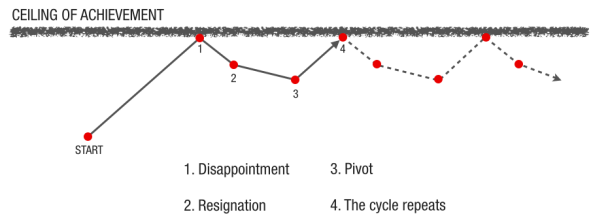
It makes sense that the riskiest assumptions require the most attention, yet you cannot simply rely on your own intuition and expertise correctly prioritize your company’s risks, regardless of how business-savvy you are. Luckily, Mayra has provided a couple of ways for you to get started.

Start with the 3 Universal Risks
If you’re not sure which types of risks will demand the most scrutiny, begin by taking a look at the universal risks that apply to almost every product. These are:

- Ensuring your customer/problem assumptions are valid.
- Ensuring these problems represent a monetizable pain (revenue stream).
- Ensuring that you have a path or can build a path to customers (channels).
Talk to Domain Experts
Take the time to meet with experts and advisors with experience in the industry you’re working in. Assuming you’re meeting with knowledgeable authorities, this can be a valuable means of discovering the potential risks that your startup faces. However, keep in mind that you may receive conflicting views on the risk factors of your company, and that what worked for someone else may not necessarily work for you.
Diana Kander, author of the New York Times bestseller All In Startup, outlined a systematic approach to prioritizing business assumptions in her blog post, “How to Diagnose Your Riskiest Assumptions”. According to Kander’s method, each assumption you’ve written down must be ranked according to two criteria:
-
Possibility of assumption being wrong
-
Level of impact if assumption is wrong
Analyze every one of your assumptions and assign each a score of 1 to 5 on the possibility of it being wrong, and assign each a score of 1 to 10 on how detrimental an incorrect guess of this assumption would be to your startup. Then, multiply the two numbers to determine the overall risk level of each of your assumptions. The assumptions with the highest scores will need the most testing and planning.
Click below for an easy to use Google Spreadsheet template:
Test Your Assumptions
After you’ve thoroughly laid out your assumptions and carefully scrutinized the risk factor of each, then you must test your assumptions and validate your ideas. While it may be tempting to adopt the rebellious mindset so often associated with innovative thinkers, it’s best to avoid risking your livelihood if you can and take the time to ensure that your company will succeed.
In fact, not only is substantiating your hypotheses a vital step in improving your startup’s prospects, it can also be an inexpensive process. In the Growth List blog post, “5 Ways To Validate Your Startup Ideas With $100”, Sean Kim summarizes several ways that entrepreneurs can test their assumptions with little money.
Build a Landing Page
Aaron Patzer, founder of Mint.com, recommends the following approach:
Validate The Idea → Create A Prototype → Build The Right Team → Raise Funding
With a landing page, you can bring people to your website, collect the emails of potential users, build your audience, and test the demand of your offering and discover what resonates with your audience.
Launch a Crowdfunding Campaign
With the proliferation of crowdfunding platforms in recent years, entrepreneurs can now introduce their products and generate sales for it before they have their first prototype finished. If your crowdfunding goals are met, and hopefully even exceeded, you will then have the money you need to build and launch your product, as well as the confirmation that your product has an audience.
Host a Webinar
While not talked about as much as a viable method, hosting a live webinar about your product or service is another effective way to measure the demand for your offering. Be sure to provide an exclusive offer to your audience at the end of your webinar with a link to a checkout page. With enough sales, you can build and launch your product to a waiting customer base.

If you’re the extraverted type, interviewing potential customers in person and hosting survey panels may be more suitable for your needs. In the eFounders blog post, “How to validate a startup idea?”, Thibaud Elziere emphasizes how interviewing customers brings a quantitative aspect to a usually very qualitative process, and outlines several methods for getting the most out of meeting people in person.
-
Interview at least 20 people who you think represent your target market and ask them about their current needs and how those needs are currently met.
-
Next, ask these people questions the price of their currently solution, its quality, its performance, and its convenience. Each of these qualities may vary depending on the product or service, so be sure to establish the proper context for your questions. Here are examples of context for each of these qualities to help guide you:
-
Price: purchase fee, setup, fee, subscription fee, license fee
-
Quality: relevance of results, infrastructure availability, customer service quality
-
Performance: response time, delivery time, travel speed, quantity of items, number of results
-
Convenience: easy to use, easy to carry on, easy to park, easy to access, easy to order.
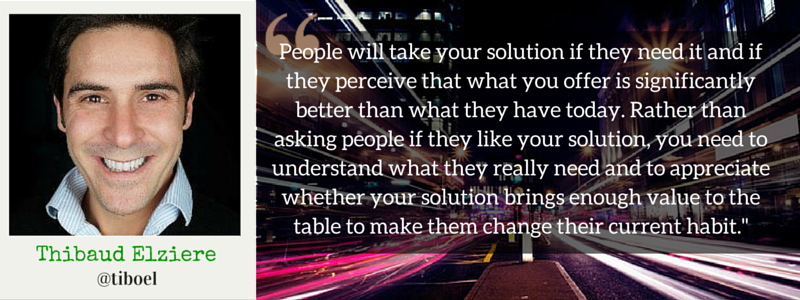
Final Thoughts
Risks are what make life worth living. Without taking the occasional risk, we may never get out of our comfort zone, learn new lessons, or experience the thrill of doing something most people never do. However, before you go diving into a potentially dangerous adventure (i.e. launching a tech startup), taking the time to carefully analyze the troubles that you may encounter along the way will help you determine if that risk is worth taking.
"The biggest risk is not taking any risk... In a world that’s changing really quickly, the only strategy that is guaranteed to fail is not taking risks.” - Mark Zuckerberg
Graduates of the Founder Institute are creating some of the world's fastest growing startups, having raised over 2BN in funding, and building products people love across over 200 cities worldwide.
See the most recent news from our Grads at FI.co/news, or learn more about their stories at FI.co/journey.

